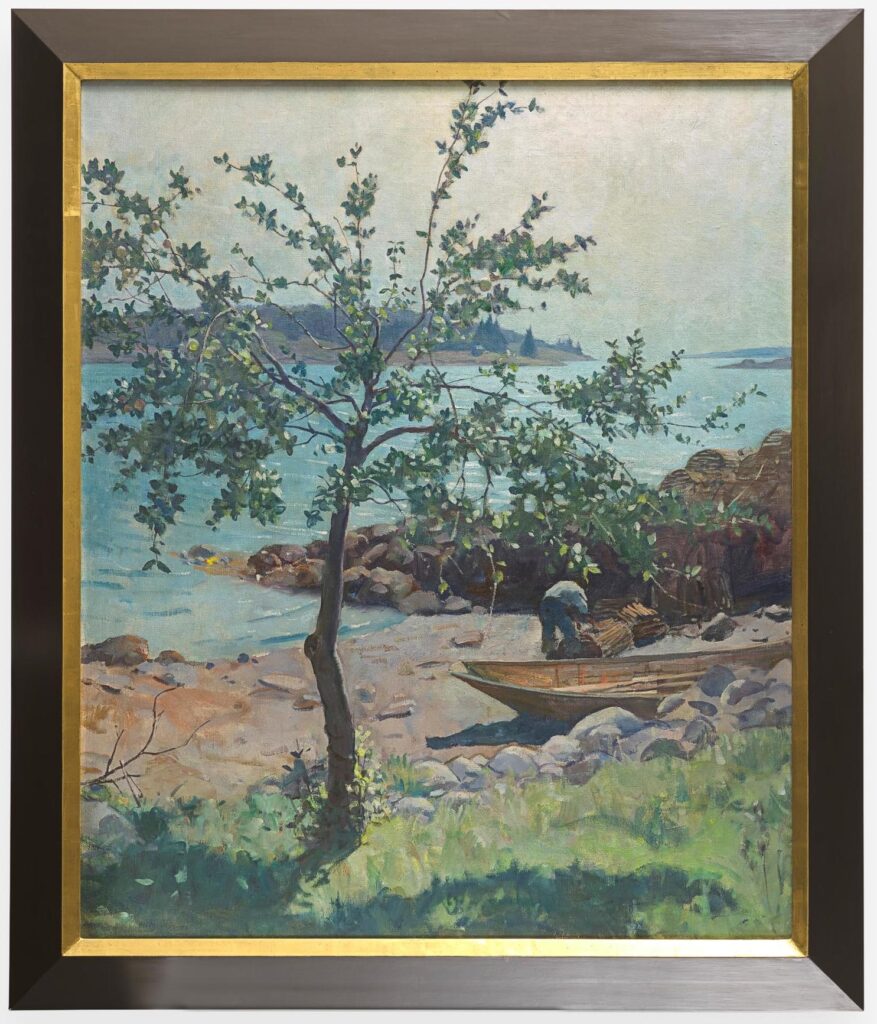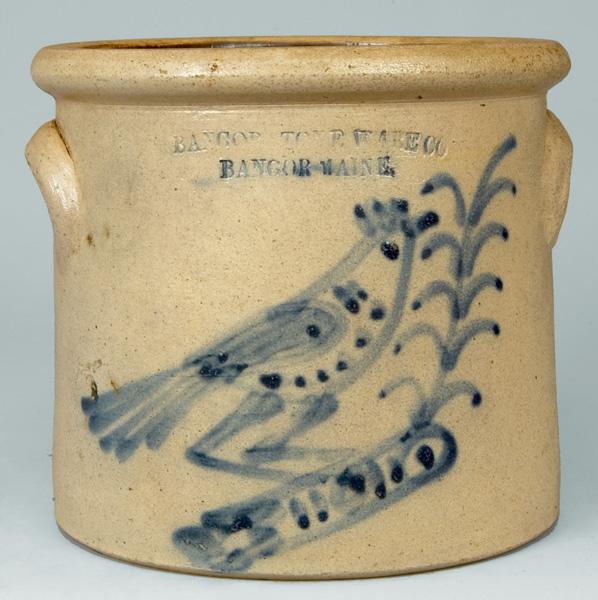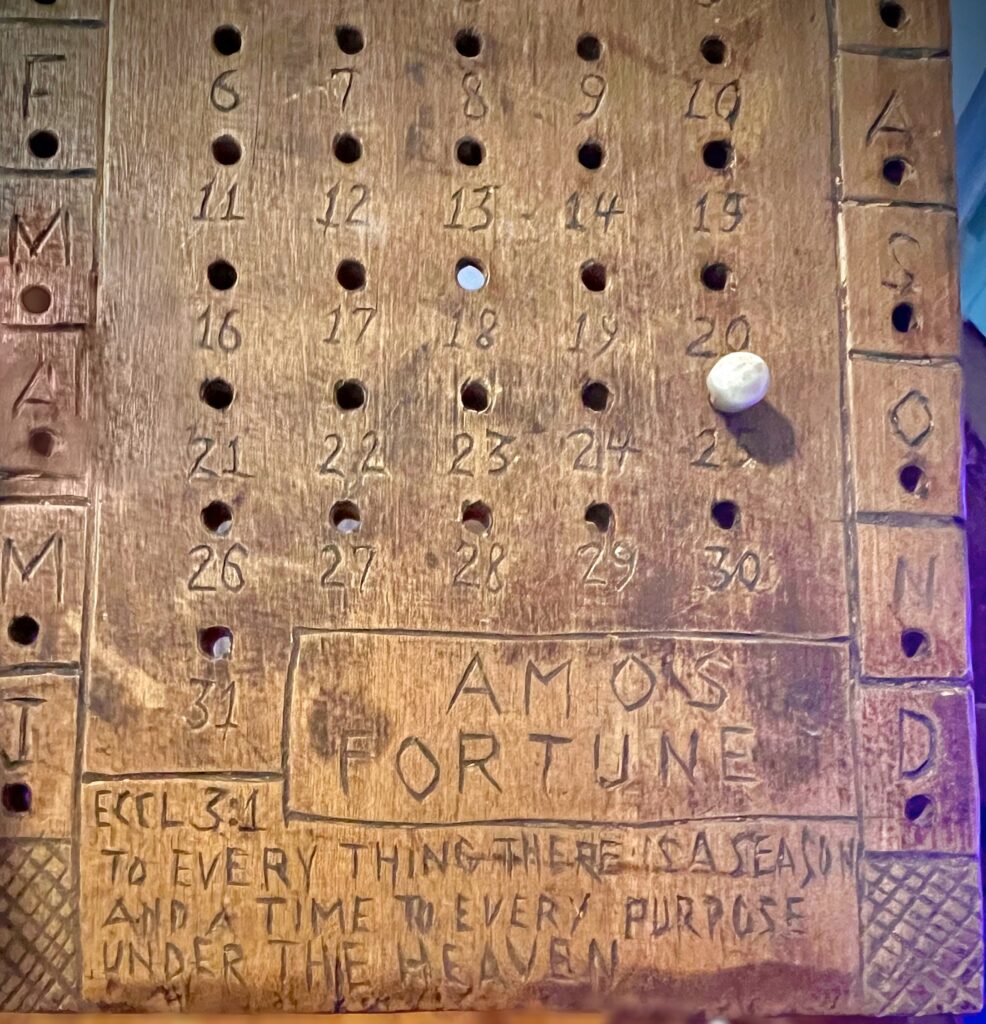BLOG
Finds and Interests
An exhilarating surge of anticipation builds in the room as the auctioneer’s rhythmic cadence guides the bids higher and higher. With every call, your heart quickens, the excitement palpable in the air. As the auction progresses, your focus narrows, and the world around you blurs into a backdrop of people murmuring and the rhythmic sound of the gavel striking the podium. As you near the end, time seems to hold its breath, and the auctioneer’s voice declares a winner. The realization sinks in when you’ve secured a rare treasure, an object of exquisite beauty and significance. Can you guess what you’ve won?

Source: WorthPoint
Exploring N.C. Wyeth’s Artistic Legacy and the Rich History of Maine
In June of this year, Freeman’s Auctions presented an extraordinary original work by Newell Convers Wyeth (October 22, 1883–October 19, 1945) for auction. As an accomplished American artist and illustrator, Wyeth remains in our memories, celebrated for his iconic images in books like Treasure Island and The Last of the Mohicans. His artistic legacy is evident in the numerous displays of his work in various museums nationwide. Therefore, it’s unsurprising that his pieces have a substantial price tag—the highest sale for one of Wyeth’s paintings is $5 million.
This particular artwork—a landscape oil on canvas of a tree in Port Clyde, Maine—fetched a remarkable $2,450,000 at auction. It’s the kind of masterpiece that leaves you breathless and casts a shadow on the reproduced prints found in contemporary stores. Numerous aspects are subject to debate regarding the reasons behind the commanding high prices of N.C. Wyeth’s art in the market. The historical significance and its linkage to classic literature may be contributing factors; nonetheless, we must acknowledge Wyeth’s extraordinary attention to detail and ability to elicit emotional reactions from viewers.
Maine is celebrated for its scenic beauty and picturesque allure. Despite spending more summers in Maine than in my home state, my journeys never led me to spots like Acadia National Park or the Appalachian Mountains. Instead, my father introduced me to the historical tapestry of Maine. This state has a rich and diverse history encompassing significant events and contributions to the United States. Many hidden treasures come within Maine’s storied past, eagerly awaiting our discovery.
Flea Market Chronicles: Where Ice Cream and History Collide
Each year, our trips began with the same ritual—visiting the local flea market. “We just have to say hello to the fleas,” my dad would say. No matter whether we had just touched down at the airport or endured a grueling twenty-two-hour car ride, my father insisted on a detour that consisted of several hours before we headed to our home away from home. Perhaps he couldn’t resist the allure of a bargain, or maybe he simply relished engaging with individuals eager to explore the histories behind the wares they relied on for their livelihoods.
Nonetheless, I found it all rather dull at the time. Yet, my dad consistently went out of his way to convey to me the significance of these overlooked stories. I understood that during every visit to the flea market, an ice cream cone was the initial bait, followed by a narrative that transported me to an era my still-developing frontal lobe couldn’t easily interrupt. Now, as an adult, I sincerely appreciate the historical gems one can discover in these obscure corners, provided you know where to direct your gaze.
Unearthing Treasures in Maine

Source: WorthPoint
Like many other states in the United States, Maine has a rich history, and you can find various antiques associated with the state’s heritage. Here are some notable historical items and categories you might find in Maine:
- Shipwreck Artifacts: Maine’s rugged coastlines have been the sites of shipwrecks. These ships don’t receive praise because they’re hiding $20 million in gold. Instead, items like antique bottles and glass contribute towards the ship becoming a capsule of life.
- Furniture: Antique furniture from Maine often reflects the state’s craftsmanship traditions. One example is the Federal style, with popular pieces being sideboards, small tables, and four-post beds.
- Lobstering and Fishing Equipment: Given Maine’s coastal location and history of lobstering and fishing, vintage traps, tools, and gear are often collectible items.
- Textiles: Maine is known for its textile mills. Antique quilts, blankets, and clothing items produced in these mills can be valuable or sought after.
- Stoneware and Pottery: Maine has a tradition of producing stoneware and pottery. Antique pieces from Maine potters can be collectible. Two historical manufacturers include the Portland Stone Ware Company and the Bangor Stone Ware Company.
- Photographs and Postcards: Antique photographs and postcards of Maine’s landscapes, cities, and events can be fascinating collectibles.
- Civil War Relics: Maine played a significant role in the American Civil War. Collectors may seek Civil War-era artifacts, including uniform buttons, weapons, and letters from Maine soldiers.
From One to Many: Connecting History, One Piece at a Time

Photo courtesy: Sarah Seippel
Throughout human history, deliberate destruction, loss of documentation, and a lack of presentation have caused an erasure of history. The key to unlocking more of the missing pieces that make up the historical puzzle of the world’s past is hiding away in the most mundane spots. Sometimes, these items are accompanied by a high price tag, but other times, it is more of a prize to uncover forgotten or suppressed histories. One example of an item that contributes to understanding a larger piece of history is an item that my father came across at an auction in the 1980s.
It was a typical night at the auction, and my father came across a perpetual calendar used by Amos Fortune. While the antique perpetual calendar is a unique find, it plays a more significant role in unlocking more critical information regarding the history of Amos Fortune, an African-born man captured by slave traders and transported to the American colonies. Amos Fortune’s life story is significant because it reflects the resilience and determination of an individual who overcame the brutal circumstances of enslavement to build a better life for himself during a challenging historical period. When pieced together with other artifacts, this item enables historians to understand a more significant portion of history.
Happy Hunting!
N.C. Wyeth had a keen eye for capturing Maine’s timeless beauty through his artistry. But if art doesn’t tickle your fancy, fear not. Maine is brimming with tasteful historical gems just waiting to be uncovered and illuminated.
When collecting historical pieces, it is important to consider factors like markers, age, condition, and rarity. Collectors often look for items with clear maker’s marks or distinctive decoration. It’s often a good idea to consult with antique dealers, appraisers, or collectors who specialize in your niche of interest to learn more about specific pieces or their value.
Sarah Seippel is a freelance writer and finds much of her inspiration in her father’s unique collections. In her free time, she enjoys hunting down the best cup of coffee and pursuing for vintage deals.